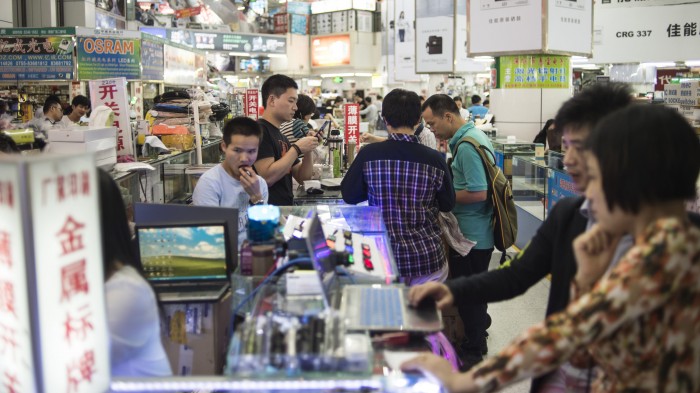Your Next Hot Gadget May Be Designed, Not Just Built, in China

Historically, China has built the majority of the gadgets that we’ve all clamored to own, but few of them were designed there. That may change.
Bloomberg reports that in-house teams at some of China’s more advanced factories have started designing and prototyping their own devices in an attempt to engineer the next generation of lusted-after gadgets.
The strategy makes some sense. It comes at a time when consumer electronics innovation is going through an awkward stage. Smartphone advances have plateaued, as Apple knows all too well. Virtual reality is still struggling to take off. And while others, such as Microsoft, are tying hard to innovate, they’ve yet to create a new iPhone-like phenomenon. There’s scope for someone to create the Next Big Thing—we just don’t know what it is yet.
At the same time, market conditions threaten some of China’s bread-and-butter electronics manufacturing income. President Trump continues to urge businesses to set up more manufacturing facilities in the U.S., and many appear to be capitulating. And Chinese factories, while ultra-efficient and full of highly skilled workers, are no longer as cheap as those in other parts of Asia.
So it is, then, that some factories are designing new gadgets in the hope that they could capture public imagination. In particular, Bloomberg points to one manufacturing firm called Jetta, which co-developed a remote control ball that went on to become the incredibly popular BB-8 Star Wars toy.
But designing the gadgets of the future will be hard work, and it's unclear that Chinese factories will have the insights required. Indeed, not all of the ideas sound likely to be a commercial success: the report, for instance, references a “neon-lit unicycle blasting music from embedded Bluetooth speakers” and “a smartphone that doubles as an electric shaver.” But the view is likely to be that if enough mud is thrown, at least some of it may stick.
(Read more: Bloomberg, “Why Apple Can’t Match the iPhone’s Success,” “The All-American iPhone,” “Is Microsoft Innovating Its Way to Customer Alienation?”)
Keep Reading
Most Popular
Large language models can do jaw-dropping things. But nobody knows exactly why.
And that's a problem. Figuring it out is one of the biggest scientific puzzles of our time and a crucial step towards controlling more powerful future models.
The problem with plug-in hybrids? Their drivers.
Plug-in hybrids are often sold as a transition to EVs, but new data from Europe shows we’re still underestimating the emissions they produce.
Google DeepMind’s new generative model makes Super Mario–like games from scratch
Genie learns how to control games by watching hours and hours of video. It could help train next-gen robots too.
How scientists traced a mysterious covid case back to six toilets
When wastewater surveillance turns into a hunt for a single infected individual, the ethics get tricky.
Stay connected
Get the latest updates from
MIT Technology Review
Discover special offers, top stories, upcoming events, and more.